One of the most striking features of the men’s basketball bubble this year is the unmistakable prevalence of mid-majors.
Usually at this time of year, we should be debating whether a team from the middle of the standings in a major conference deserves an at-large bid at the expense of a program from outside the six “power” conferences. This March, however, it’s just as likely that one mid-major could take a bid away from another.
Consider Joe Lunardi’s latest projected bracket at Bracketology. Specifically, take note of the teams Joe shows as either just in (on seed lines Nos. 11 or 12) or just outside of (“first four out”) the field.
Yes, you’ll find major-conference names such as Indiana, Oregon, UConn, Stanford and Maryland among these hopefuls. But the heavies from the power leagues are outnumbered in these same categories by teams such as VCU, St. Bonaventure, Boise State, Drake, Colorado State, Utah State, Saint Louis and Richmond.
Several of these bubble teams are from either the Atlantic 10 or the Mountain West. It’s conceivable these programs could “beat each other up” the same way that major-conference aspirants are so commonly said to do to each other. In fact, Boise State and Utah State are playing a crucial two-game series in Boise.
Nevertheless, the sheer volume of names from outside the major conferences gives these programs a degree of hope that, at least this year, is also somewhat appropriate. An extra at-large spot has opened in the 2021 field because there will be no Ivy representative.
There’s a decent chance that bid will be earned not by the 10th-place team in the Big Ten or the fifth-place team in the Pac-12 but rather by an up-and-coming mid-major.
Here’s our current projection of the bubble:
Bids from traditional one-bid leagues (minus the Ivy): 20 teams
Locks: 12 teams
The bubble: 46 teams for 36 available spots
Should be in: 23 teams
Work to do: 23 teams
ACC | Big 12 | Big East | Big Ten | Pac-12 | SEC | American | Others
ACC
Locks: Virginia
Should be in

Due to a wrinkle in the projected brackets, we here at Bubble Watch HQ get to comment on the Seminoles for what will likely be one last time before waving Leonard Hamilton’s men on through to the land of the locks. When the NCAA released its 16-team bracket preview, FSU was nowhere to be seen. That seemed like a perfectly defensible decision when, later that same Saturday, the Seminoles needed overtime to defeat Wake Forest in Tallahassee. Then again, Hamilton’s team was coming off a pause due to COVID-19 when it faced the Demon Deacons, and in its next home game, Florida State destroyed Virginia 81-60. On possessions on which it doesn’t commit a turnover, FSU is one of the most efficient offenses we’ve seen in the past decade of major-conference play.

Despite a relatively modest scoring margin in ACC play, the Hokies are cruising toward a no-drama bid in the middle of the bracket. How has Mike Young‘s team worked this magic? The overtime win against Villanova on a neutral floor in November helps, as does a 5-1 record in conference games decided by seven points or fewer. Virginia Tech’s defense forces a fair share of misses at the rim and does a good job limiting opponents to one shot. Meanwhile, Keve Aluma has hit 63% of his 2s and recorded three double-doubles over his last four outings.
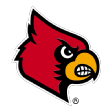
On Super Bowl Sunday, Louisville announced that it was pausing activities after coach Chris Mack tested positive for COVID-19. (Get well soon, Coach!) Up until that time, the Cardinals had parlayed very good defense into a spot near or alongside the estimable likes of Florida State and Virginia Tech in the ACC standings. True, Louisville can still find itself on any given day without a Quad 1 win to its credit this season. (This state of affairs hinges on whether Pitt is above or below No. 75 in the NET rankings.) Still, this blank or penciled-in spot on the profile hasn’t prevented the Cards (nor should it) from showing up in projected brackets as a No. 8 seed or thereabouts.

Meet the mercurial Tigers, clinging to “Should be in” status despite a track record that has included both peaks and valleys. On the one hand, Clemson has recorded victories by eight points or more against a veritable who’s who of tournament-track opponents, namely, Purdue, Alabama and Florida State. On the other hand, the Tigers have also been ground into a fine powder by Virginia (lost by 35), Georgia Tech (defeated by 18), Duke (drubbed by 26) and the aforementioned Seminoles (downed by 19). Add it all up and you have a respectable NET ranking, yes, but also a projected No. 8 seed that could elicit howls of skepticism from several reputable laptops next month.
Work to do
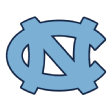
The Tar Heels put out a request on Twitter asking if any team wanted to play a game in Chapel Hill, and Northeastern answered that call. The result was an 82-62 victory for the home team, likely to be the last low-drama game UNC gets for a while. Roy Williams’ men are closing the season with four games that line up as coin flips or close to it. The Heels will host Louisville, Florida State and Duke in addition to playing a road game at Syracuse. North Carolina enters this home stretch as a projected No. 11 seed. A .500 record (or better) over these four games could be enough to earn a bid.

Say hello to the season’s first new member of the impressive Bubble Watch club. No, Syracuse isn’t here by virtue of its most recent result (a victory at home over Boston College). The win at home over Virginia Tech is this profile’s strongest bullet point, and, despite being swept by Pitt, Jim Boeheim’s 12-6 team is the equal of North Carolina in the NET rankings and superior to several bubble teams in terms of strength of record. Now, the bad news for the Orange faithful: Syracuse is, as our colleague Joe Lunardi likes to say, “on the bubble of the bubble.” The Orange will have to overtake competitors such as Saint Louis, Richmond and Maryland to actually earn an at-large bid. But the Cuse is in the discussion.

Big 12
Locks: Baylor, Oklahoma, West Virginia
Should be in

With wins in their past two outings over Kansas State and TCU, the Longhorns have halted a slide in which they lost four of five games. In addition, the NCAA awarded Texas a No. 4 seed in its 16-team bracket preview prior to UT’s tipoff against the Horned Frogs. That’s a sound verdict, certainly, with respect to a profile that features wins over West Virginia, Kansas, Oklahoma State, Indiana and North Carolina. Indeed, there’s still a possibility that a Texas team that was earning a spot on the No. 1 line in mock brackets last month could improve its seeding thanks to upcoming opportunities against Oklahoma, the Mountaineers, the Jayhawks and Texas Tech. Shaka Smart’s men are seeking their first victory over an at-large-quality opponent since the two-point win over West Virginia in Morgantown in early January.

The most memorable aspect of Texas Tech’s loss at home to West Virginia was Chris Beard being thrown out of the game in the closing seconds after literally going to the floor to make his point to the officials. In addition to providing good theatrics, however, the game highlighted a problem that has bedeviled an otherwise excellent defense throughout the Big 12 season. Opponents have been on fire from the perimeter against the Red Raiders. The Mountaineers hit 7-of-14 from beyond the arc, and the Big 12 collectively has shot 41% on its 3s against Texas Tech. If opponents ever cool down from outside, Beard’s team could be even stronger than a projected No. 4 seed.
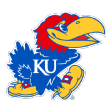
It took a while for the Jayhawks to identify how they would win games this season, but, after a one-week stint outside the top 25 for the first time in over a decade, Bill Self’s guys seem to have found an answer. This is a really good defense. No Big 12 team has forced a higher percentage of misses inside the arc in league play, Jalen Wilson and David McCormack take care of business on the defensive glass and KU as a team accomplishes all of the above without fouling. Two games against Iowa State and one against Kansas State have lifted Kansas to a 16-7 record as a projected No. 6 seed.
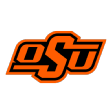
Technically, Oklahoma State is ineligible for the postseason. The Cowboys have appealed that ruling with the NCAA, however, and as long as the appeal is pending, OSU is permitted to play its way into the tournament. Which is exactly what the Cowboys are doing: Cade Cunningham is the Big 12’s leading scorer en route, one presumes, to being the No. 1 overall pick or close to it in the 2021 NBA draft. As a projected No. 7 seed, Mike Boynton’s team excels at forcing misses on defense and exhibits an extreme (if fast-paced) interior orientation on offense. Oklahoma State loves to get to the line.

Big East
Locks: Villanova
Should be in
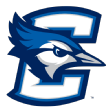
Marcus Zegarowski lived up to his billing as the preseason Big East player of the year and scored 25 points as the Bluejays buried Villanova 86-70 in Omaha. In converting 71% of its 2s and 46% of its 3s (on 12-of-26 shooting from beyond the arc), Creighton offered a repeat performance of the same dazzling accuracy it achieved in an 89-53 win over Seton Hall in January. Clearly, CU’s offense can explode at any time, and a big win over a tournament lock has the potential to boost the No. 6 seed Creighton had been showing in mock brackets. If and when that happens, though, be sure to give equal credit to the Greg McDermott’s defense. The Bluejays are neck-and-neck with UConn for the title of best D in Big East play.

Challenged by multiple COVID-19 pauses, Xavier finds itself trying to perform well enough for its best win to matter. In December, the Musketeers hosted Oklahoma in Cincinnati and came away with a 99-77 win. Multiple interruptions followed, however, and Travis Steele’s team is now coming off consecutive losses to UConn (in a game in which James Bouknight did not play) and St. John’s. The Musketeers are 11-4 with a NET ranking in the 40s and a projected No. 8 seed to their name. That spot in the mock brackets has felt like something of a placeholder, though, given this team’s travails, and Xavier has to record some wins sooner rather than later to preserve that seed.
Work to do

The Pirates have won four straight and, with a 10-5 record in the Big East, Kevin Willard’s group is rapidly taking the suspense out of what was once a suspenseful quest for a bid. Seton Hall appears to be on track for a No. 10 seed, and Sandro Mamukelashvili is carrying almost as heavy a workload on offense as Myles Powell did for this team last year. Mamukelashvili rang up 25 points against DePaul, no small feat in a game where his team scored just 60 in an eight-point win in Newark. This is a very good interior defense and, even in the ultra-low-foul Big East, Seton Hall makes plenty of trips to the line

James Bouknight not only returned from his elbow injury after missing eight games, he recorded a spectacular slam dunk on a putback within moments of coach Dan Hurley putting him on the floor. The Huskies channeled that same energy and prevailed at home 73-61 against Providence. The Quad 3 victory keeps 10-5 UConn right where it was before tipoff, poised on the edge of the bubble as either one of the last teams in or as one of the first teams out. With a NET ranking in the high 50s, the potentially rejuvenated Huskies could enhance this profile dramatically with a win this weekend at Villanova. A victory against the Wildcats at Finneran Pavilion would go nicely alongside Connecticut’s neutral-floor win over USC in December.

At some point, something will have to give in the standoff between the Red Storm’s victories and the team’s NET ranking. Mike Anderson’s men have won six of their past seven Big East games, yet their number in the NCAA’s metric of choice was still in the 70s at tipoff of what became a 93-84 win over Xavier in Queens. Whether it’s the ranking, the losses to Georgetown, Marquette and Butler or something else entirely, at 14-8, St. John’s finds itself relegated to “next four out” status in many mock brackets until further notice. Julian Champagnie and Posh Alexander make up a formidable duo, and this offense operates at Anderson’s preferred (fast) pace.

Big Ten
Locks: Michigan, Ohio State, Illinois, Iowa
Should be in

Michigan was coming off a long pause due to COVID, but the Wolverines outscored the Badgers 40-20 in the second half to win by eight in Madison, Wisconsin. Chalk the game up as a lost opportunity for Wisconsin, which didn’t hear its name called in the NCAA’s 16-team bracket preview the previous day and thus carried a No. 5 seed in most mock brackets before tipoff. Greg Gard’s team will most likely earn a nice seed regardless, but the coach is in all probability concerned by the performance of this offense. Basically, the Badgers are a perimeter-oriented team that’s not making its 3s. Wisconsin has shot just 25% from beyond the arc over its past three games, and Gard’s men have repeated the “win-lose-win-lose” sequence since late January.

Trevion Williams wore out Michigan State to the tune of 28 points in 31 minutes in Purdue’s 10-point win at home over the Spartans. While the 14-8 overall record and 9-6 mark in the Big Ten might look straightforward enough, included in those numbers are a sweep of Ohio State as well as wins over Minnesota and Indiana. This body of work has pretty consistently netted Purdue a No. 6 seed in mock brackets. The Boilers favor a methodical tempo and love to crash their offensive glass.

The Scarlet Knights love to pressure the ball on defense, having recorded a takeaway on roughly one in every five possessions in conference play. That may not sound like an exceedingly high number, but in the ultra-low-turnover Big Ten it’s as close to “40 minutes of hell” as you’re going to see. Rutgers would have made its first NCAA tournament in 29 years if the event had been held as scheduled last March. Instead, Steve Pikiell’s program is about to return after an absence of 30 years, perhaps as a No. 7 seed. In the Knights’ 14-point win at home over Northwestern, Myles Johnson recorded a 12-14 double-double to go along with four blocks. The junior has been a model of efficiency in a supporting role all season.
Work to do
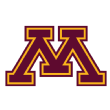
The good news for Minnesota fans is that this profile can likely sustain a loss at Indiana and still earn the team an at-large bid. The Golden Gophers entered the game in Bloomington projected as a No. 10 seed, a spot rewarded by purveyors of mock brackets in acknowledgment of this team’s wins over Michigan, Ohio State, Iowa and Purdue. The bad news is that Minnesota’s extreme road woes continue (the Gophers are 0-8 when playing on the opponent’s home court). That shouldn’t be a concern in the NCAA tournament, but the Big Ten’s lowest defensive rebound percentage in league play could be.

An outlook that looked rather dire when Illinois eked out an overtime win in Bloomington and dropped the Hoosiers to 4-6 in the Big Ten now looks a good deal brighter. Since that time IU has won three of four, the latest victory being an 82-72 decision at home over Minnesota. Mock brackets pegged Indiana as a No. 11 seed going into the contest, and Archie Miller’s group will keep that spot heading into a decisive four-game closing stretch. With home games against Michigan State and Michigan and road dates at Rutgers and Purdue, the Hoosiers could arrive at Selection Sunday as anything from a confident middle seed to a fretful bubble denizen.

The Terrapins did what they needed to do, winning back-to-back games at home over Nebraska and improving to 13-10 and 7-9 in the Big Ten. Mark Turgeon’s guys are still shown as just outside the tournament field in mock brackets, and the Terrapins have their best shot at recording one more key win in their next game. Maryland will play at Rutgers, and a victory there would take its place alongside wins already recorded at Illinois and Wisconsin (not to mention one at home over Purdue and a season sweep of Minnesota). The Terps still have a shot.
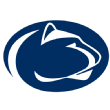
Let’s not overthink this. Penn State lost 62-61 at home to Nebraska, a turn of events that, at game time, qualified as a Quad 4 defeat. (Ironically, in the very act of winning, the Cornhuskers improved their NET ranking enough to make this “merely” a Quad 3 loss for the Nittany Lions. That’s still really bad.) Jim Ferry’s team is 7-10 overall and 4-9 in the Big Ten. You’re asking, “Why are we still talking about this team at Bubble Watch?” Because, dear reader, in its next game Penn State will host Ohio State. If the Nittany Lions got it into their heads to UMBC this thing something fierce and somehow shock the world, we’d be looking at a profile with wins over the Buckeyes, Wisconsin, Virginia Tech, Rutgers and Maryland. But, yes, that’s pretty much what it will take for Penn State to hang around these parts.

Pac-12
Should be in

The Trojans are 13-1 in calendar year 2021 and have been climbing the seed lines in mock brackets that entire time. Now Andy Enfield’s team finds itself earmarked for a No. 4 seed, with lock status here at Bubble Watch likely to follow very soon. Relative to the respective conference means, USC’s defense has been almost as good against the Pac-12 as Michigan’s has been against the Big Ten. Evan Mobley gets his fair share of the headlines, but it’s truly been a team effort in LA. Tahj Eddy has lifted his game in Pac-12 play, Isaiah Mobley has outperformed his younger brother on the offensive glass and as a team SC is limiting conference opponents to 44% shooting on their 2s.
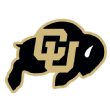
Losing a road game at Cal, as Colorado did by the score of 71-62, qualifies as a Quad 3 defeat. It is CU’s third such loss of the season, to go along with setbacks at home against Utah and on the road at Washington. Prior to falling in Berkeley, Tad Boyle’s team was being projected as a No. 6 seed. Now, at 16-6 and carrying what the committee will likely view as three “bad” losses, that seed is in all probability going to drop. At the same time, a team with wins over USC, Oregon and Stanford (twice) still has some strong points on it résumé.

As a projected No. 8 seed with a 14-5 record, Mick Cronin’s team finds itself entirely reliant on Pac-12 teams other than USC to define just how good UCLA’s “good wins” really are. The Bruins lost to both Ohio State and San Diego State, leaving a three-point win at home over Colorado as far and away the highlight of this profile. Phrased less charitably, that game marks the Bruins’ only win against an at-large-caliber opponent. UCLA will have an opportunity to change this state of affairs when they close the season with games against the Buffaloes and Trojans. In the meantime, give credit to Johnny Juzang. The Kentucky transfer erupted for a career-high 32 points to end the Bruins’ losing streak at two and give his team a much needed 64-61 win at Washington.
Work to do

This might be the year to commit fully to the “quack attack” rallying cry in Eugene. The Ducks’ aggressive defense is forcing Pac-12 opponents into turnovers on 21% of their possessions. Absent that stat, you’re looking at an Oregon team that’s barely outscoring the rest of the league. Powered by all of the takeaways, however, UO has won three straight and now stands at 7-3 in the Pac-12. Eugene Omoruyi scored 19 for the Ducks in a 63-61 win at Arizona that gave players on both teams just 58 possessions in which to record impressive stats (it was the slowest-paced Pac-12 game of the season). Dana Altman’s team is a projected No. 11 seed that appears to be on the rise.

Alongside the suspenseful likes of VCU, UConn and Saint Louis, Stanford has been a fixture on the borderline between “in” and “out” for the better part of the bubble season. On the one hand, the Cardinal can boast of wins over Alabama and UCLA. On the other hand, Jerod Haase’s men are just 9-6 in the Pac-12, with losses to Arizona State and Utah. A NET ranking that in recent days has dipped as low as the 60s doesn’t help matters. Stanford now faces a rather pivotal two-game road trip. Wins against Washington and Washington State may be little noticed, but they would in fact get the Cardinal closer to the finish line in relatively good shape. Two losses, conversely, would be highly detrimental to their chances.

SEC
Locks: Alabama
Should be in

A relatively forgiving schedule the rest of the way affords 15-5 Tennessee the opportunity to lock in the No. 4 seed that the team’s carrying in bracket projections. Rick Barnes’ men will close the season at home against Kentucky and on the road at Vanderbilt and Auburn. The Volunteers have come this far thanks in part to the SEC’s largest turnover margin in league play. In fact, on possessions where there’s not a turnover, Tennessee’s been outscored by conference opponents by a modest yet still notable margin. It may sound like a dangerous way to live in March, but it’s proven effective in wins over Kansas, Colorado, Arkansas and Missouri.
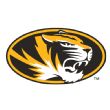
When Bubble Watch roared to life in the hours after the Super Bowl, the discussion among staff members here at HQ centered on whether to make Missouri a “lock.” Now the question is whether the 13-6 Tigers might soon be found in “Work to do.” This team has lost three straight (at Ole Miss, in overtime at home to Arkansas and at Georgia), the last two without Jeremiah Tilmon in the lineup. The Tigers entered the game against the Bulldogs projected as a No. 5 seed. That seed might fall, however, along with a NET ranking that was once in the top 10 and is now at risk of dropping into the 40s.
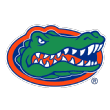
The Gators played their first game in 13 days following a COVID-19 pause and were handed a road date against possibly the hottest team in the league. The result was, perhaps not surprisingly, an 11-point loss at Arkansas. Mike White’s team is being shown as a No. 7 seed in mock brackets, and Florida’s profile includes wins over West Virginia, Tennessee and LSU. Nevertheless, UF has now dropped two straight and this team’s upcoming home game against Georgia looms as a bit more important than previously anticipated.
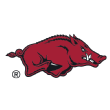
Winners of seven straight SEC games, the Razorbacks are riding high. A team that was in danger of dropping out of the projected field a month ago is now seen as a likely No. 8 seed. In his second season in Fayetteville, Eric Musselman has Arkansas playing the kind of defense that was so familiar to Nevada’s opponents in the Mountain West during the coach’s tenure there. The Hogs limit opponents to one shot and force a fair number of turnovers. Musselman’s team has a chance to earn the program its highest seed since Bobby Portis and Michael Qualls entered the 2015 tournament on the No. 5 line.
Work to do

A 13-point win at home over Tennessee on Saturday summed up what LSU does best. Cameron Thomas and Javonte Smart combined for 45 points, the Tigers connected on 20 of their 31 tries inside the arc and Will Wade’s men gave the ball away just 11 times in a 67-possession contest. A high degree of 2-point accuracy and a bare minimum of turnovers have distinguished LSU from most competing SEC offenses all season long, and those strengths are paying dividends. The Tigers looked like a probable No. 10 seed before the win over the Vols, and now that expectation appears to be on the low side. Previously, the knock on LSU was that it hadn’t won any “big” games. The victory over Tennessee addresses that objection quite nicely.
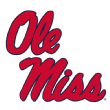
With wins in four consecutive games and a NET ranking that’s risen into the 50s, Ole Miss is making its debut here at Bubble Watch. Devontae Shuler scored 31 at South Carolina as the Rebels improved to 12-8 overall and 7-6 in the SEC. To be sure, Kermit Davis and his men have literal work to do in order to earn an at-large invite. This is a team that was swept by Georgia and that shoots just 28% on its 3s in conference play. But, at a minimum, Ole Miss has now played itself within striking distance of a bid. The Rebels close with games against Mississippi State, Missouri, Vanderbilt and Kentucky. A 3-1 run over that stretch would give Ole Miss a 10-7 SEC record and, one suspects, the ear of the committee.

American
Locks: Houston
Work to do

Maybe someday in the far off future the committee will be replaced entirely by a metric that measures how difficult it would be to duplicate any team’s wins and losses given the opponents and venues where that record was compiled. When that happens and “strength of record” (SOR), “wins above bubble” (WAB) or something similar is in the driver’s seat, it will be good news for SMU. In a SOR world, the 11-4 Mustangs would be a No. 10 seed. In the real world, however, Tim Jankovich’s men rank in the high 50s on the NET and inhabit the far outer fringes of the bubble. Keep winning, SMU.

Others
Locks: Gonzaga
Should be in

Barring unforeseen mishaps, BYU appears well on its way to enjoying the least stressful Selection Sunday of any West Coast Conference at-large aspirant not named “Gonzaga” since Saint Mary’s in 2017. (Though, to be sure, both the Cougars and the Gaels likely would have had drama-free Selection Sundays last March if there had been one.) Mark Pope’s team is looking like a potential No. 8 seed, with road wins at San Diego State and Utah State and a neutral-floor victory over St. John’s to its credit.

Congratulations to the Ramblers, winners of a close game for the first time all season. Prior a victory at home over Valparaiso by the score of 54-52, Loyola Chicago was 0-3 in games decided by five points or less. Porter Moser’s team still has two more home games to play, both against Southern Illinois. With their top-10 NET ranking and 19-4 record, the Ramblers are well on their way to the No. 9 seed they’re currently earning in mock brackets.

The Aztecs opened their regular season with wins over UCLA and Arizona State (in Tempe) in their first five games, and Brian Dutcher’s team is in the thick of the most competitive Mountain West title race in years. SDSU is currently projected as a No. 9 seed despite the fact that on any given day the Aztecs can boast of a better NET ranking than Purdue, Rutgers or Virginia Tech. Since dropping back-to-back games at Utah State in mid-January, San Diego State has reeled off six straight wins.
Work to do

After winning at home 67-64 over St. Bonaventure, the Rams are forcing their Atlantic 10 opponents into turnovers on a rather remarkable 25% of their possessions. Adrian Baldwin and Nah’Shon Hyland have two of the highest steal rates in the league and even when opponents do hold onto the ball Hason Ward blocks their shots with regularity. In short, this is a defense to rival Mike Rhoades’ 2019 team, a group that earned a lofty No. 8 seed only to bow out to UCF in the round of 64. VCU this year appears to be on track for something more along the lines of a No. 11 seed, but the defense being played by the Rams could earn the program its first NCAA tournament win since 2016.

Greetings from the Mountain West Conference, where conventional wisdom says the league may put four teams into the NCAA tournament for the first time since the halcyon days of 2013. The Broncos were at the forefront of this 2021 MWC charge until Leon Rice’s men dropped back-to-back road games at Nevada. Now BSU is appearing in mock brackets as a No. 11 seed, one with wins at BYU and Colorado State to its credit. Boise State is slated to close its regular season with a pivotal two-game series at San Diego State.

Despite trailing by 10 in the second half, Drake rallied and defeated Loyola Chicago by one point in Des Moines. The victory represented a complete turnaround after the Bulldogs had lost by 27 to the Ramblers on the same court just 24 hours earlier. The win also came without DU’s leading scorer, ShanQuan Hemphill, who missed both games against Loyola with a broken foot. Whether Hemphill will be able to return in time for a potential NCAA tournament appearance is unclear, but it appears his team might indeed make it that far. Drake is 20-2 and the Bulldogs already showed a good number for strength of record before the Quad 1 win over the Ramblers.

Few bubble teams have a profile more skewed toward conference play than the Bonnies, who played just two non-conference opponents (Akron and Hofstra) due to an early-season COVID pause. The good news for Mark Schmidt and his men is that St. Bonaventure has been excellent in Atlantic 10 play, combining tough defense with a heavy dose of offensive rebounding. For now, mock brackets envision a No. 11 seed for a team with a NET ranking in the high 30s and a nice winning percentage across a limited number of games. Note that, even in a three-point loss at VCU, Jalen Adaway was superb, with 23 points on 13 shots to go along with eight rebounds.

In the crowded bubble confines of the Mountain West, Colorado State has gone 1-1 against all three of the league’s other at-large hopefuls: Boise State, San Diego State and Utah State. So far, that track record and a NET ranking in the 40s has been sufficient for the Rams to be rewarded with either a projected spot among the last teams in the field or one amid the first teams outside it. If nothing else, this is one of the most accurate shooting offenses in the country, and CSU’s making all those shots without a single senior in the rotation. But can Niko Medved’s men hold that position when their remaining MWC schedule includes no further Quad 1 opportunities? We’re about to find out.

Utah State’s currently on what appears to be a COVID-19 pause. (“Health and safety concerns” have arisen, according to the MWC office.) No games are scheduled until next week’s two-game set at Boise State. If the Aggies can return to action, they’re very much alive in the bubble discussion thanks in large part to a two-game sweep of San Diego State in mid-January. Conference opponents have made less than 40% of their 2s against a front line anchored by Neemias Queta. If Queta’s team can get that far, the 7-foot junior stands an excellent chance of rating as the NCAA tournament’s premier rim defender. One or two wins against the Broncos next week would improve a NET ranking that varies between the high 40s and low 50s.

The only suspense in SLU’s 78-57 win at home over La Salle came when coach Travis Ford pulled Jordan Goodwin from the game with 2:20 remaining in the contest. This show of sportsmanship prevented the senior from an opportunity to record a triple-double. Goodwin instead took a seat on the bench with 16 points, 15 boards and eight assists. The Billikens were marked as preseason co-favorites along with Richmond in the Atlantic 10 until COVID-19 pauses had their say. It’s possible that, at 11-3, SLU’s hitting its stride at last and is ready to ascend from its current “first four out” status.

Give Richmond credit. The Spiders have been challenged by multiple COVID-19 pauses and by season-ending injuries to Nick Sherod and Connor Crabtree, yet Chris Mooney’s team still has a shot at playing its way into the field. Richmond’s win over Loyola Chicago in Indianapolis in December is the rock on which the Spiders are building their case for an at-large bid. Beating the Ramblers on a neutral floor constitutes a Quad 1 win, one that, in NET terms, is more impressive than UR’s 80-74 victory at Davidson. Mooney’s men will carry a 10-4 record into their bubble throwdown at home next week against crosstown rival VCU.
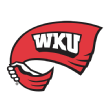
Charles Bassey is projected as a late first-round pick in the 2021 draft, and the 6-foot-11 junior has blocked shots, dominated the defensive glass and scored at a high volume in the paint all season long. In the Hilltoppers’ 73-71 win at Alabama in December, Bassey posted a 27-12 double-double against what we now know to be one of the nation’s strongest defenses. All of which raises the question of why WKU is appearing so far down this roster of bubble hopefuls. Losses to Charlotte and Louisiana Tech have left Rick Stansbury’s group with a NET ranking in the 70s. Running the table the rest of the way will improve that number somewhat, but an equally viable stratagem might be to beat out UAB for the automatic bid.

